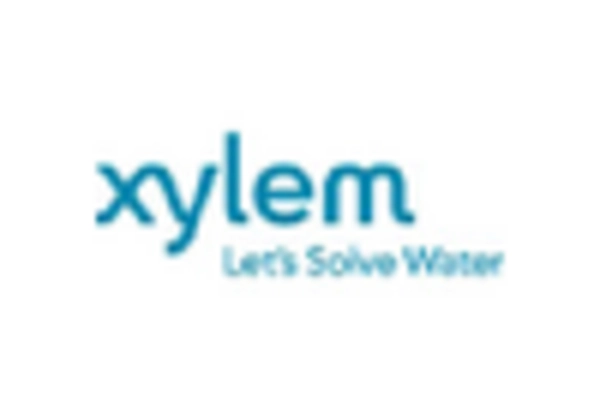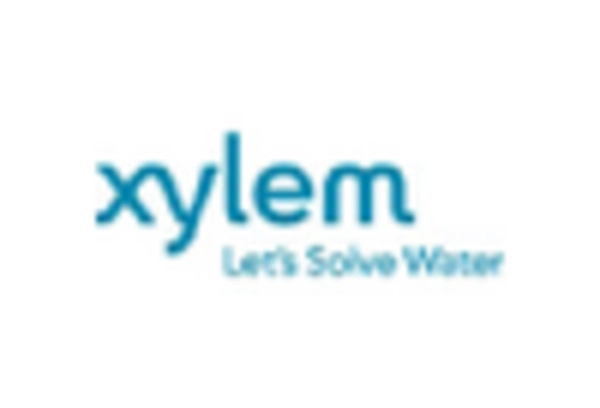Industrial Growth
The Process Water Treatment Market is experiencing a surge in demand due to the rapid expansion of various industrial sectors. Industries such as manufacturing, pharmaceuticals, and food processing require substantial amounts of water for their operations. According to recent data, the manufacturing sector alone accounts for a significant portion of water usage, necessitating efficient treatment solutions to manage wastewater. This industrial growth not only increases the volume of water that needs treatment but also elevates the complexity of treatment processes. Consequently, the Process Water Treatment Market is poised for growth as companies seek innovative solutions to address their water treatment challenges.
Sustainability Focus
The growing emphasis on sustainability is a key driver for the Process Water Treatment Market. Companies are increasingly recognizing the importance of sustainable practices in their operations, particularly in water management. This shift is evident as organizations strive to reduce their environmental footprint and enhance resource efficiency. Many industries are adopting water recycling and reuse strategies, which not only conserve water but also lower treatment costs. As sustainability becomes a core component of corporate strategies, the Process Water Treatment Market is expected to expand, with a focus on developing eco-friendly treatment solutions that align with these goals.
Regulatory Compliance
The Process Water Treatment Market is increasingly influenced by stringent regulations aimed at safeguarding water quality and public health. Governments and regulatory bodies are implementing more rigorous standards for wastewater discharge and treatment processes. This trend compels industries to invest in advanced water treatment technologies to ensure compliance. For instance, the introduction of the Clean Water Act mandates that industries meet specific effluent limitations, thereby driving the demand for effective water treatment solutions. As a result, companies are likely to allocate significant resources towards upgrading their water treatment facilities, which in turn propels growth within the Process Water Treatment Market.
Rising Water Scarcity
The escalating issue of water scarcity is a significant driver for the Process Water Treatment Market. As populations grow and industrial activities intensify, the demand for clean water is outpacing supply in many regions. This scarcity compels industries to seek effective water treatment solutions to maximize the use of available water resources. The need for efficient treatment technologies that can convert wastewater into reusable water is becoming increasingly critical. Consequently, the Process Water Treatment Market is likely to experience robust growth as stakeholders prioritize investments in technologies that address water scarcity challenges.
Technological Innovations
Technological advancements play a pivotal role in shaping the Process Water Treatment Market. Innovations such as membrane filtration, advanced oxidation processes, and smart monitoring systems are revolutionizing how water is treated. These technologies enhance efficiency, reduce operational costs, and improve the overall effectiveness of water treatment processes. For example, membrane technologies can achieve higher purification levels while minimizing energy consumption. As industries increasingly adopt these cutting-edge solutions, the Process Water Treatment Market is likely to witness substantial growth, driven by the need for more effective and sustainable water treatment options.


















Leave a Comment